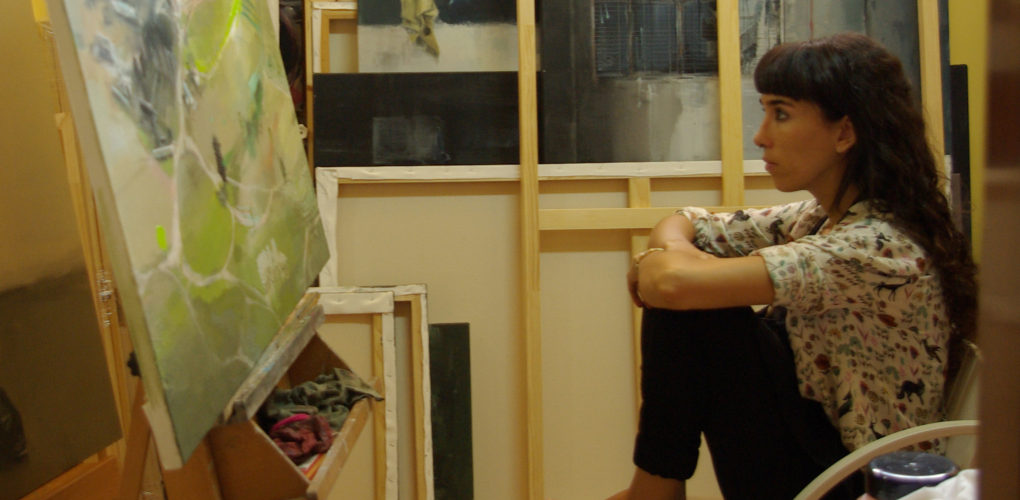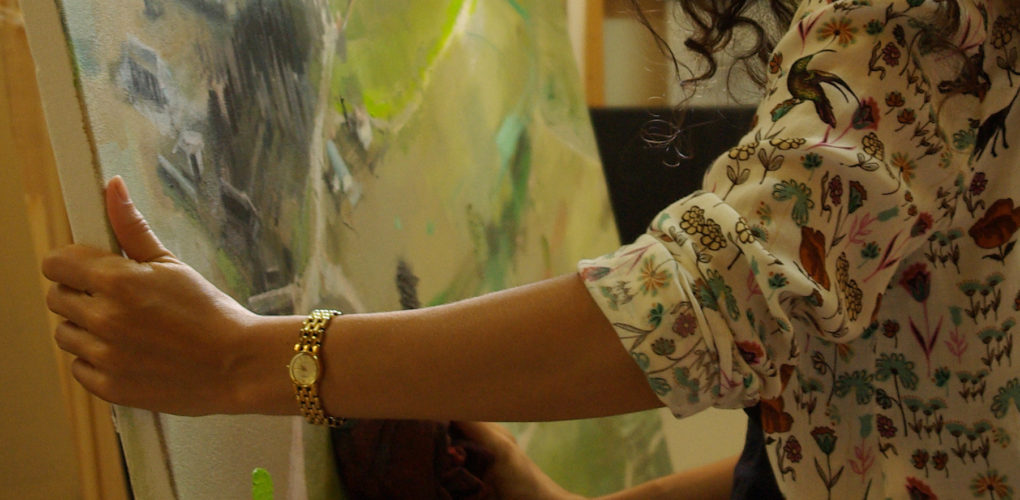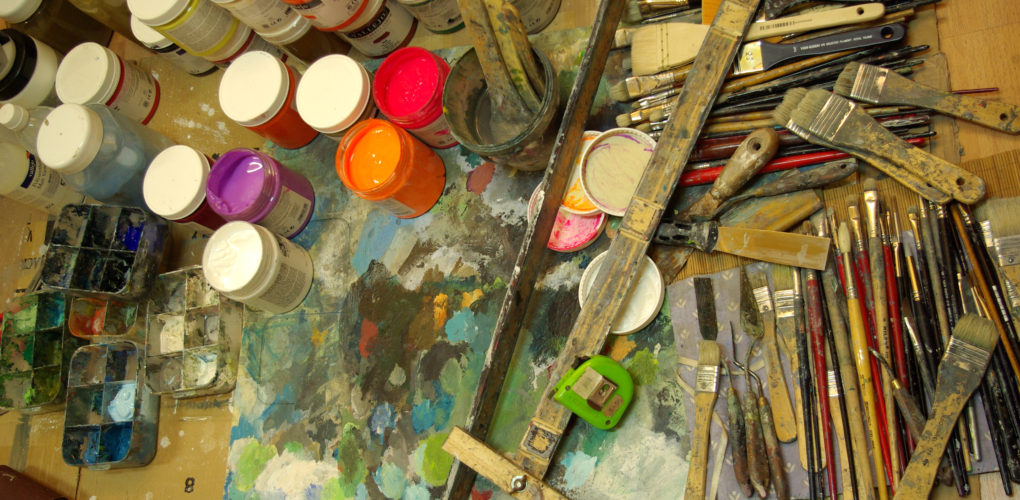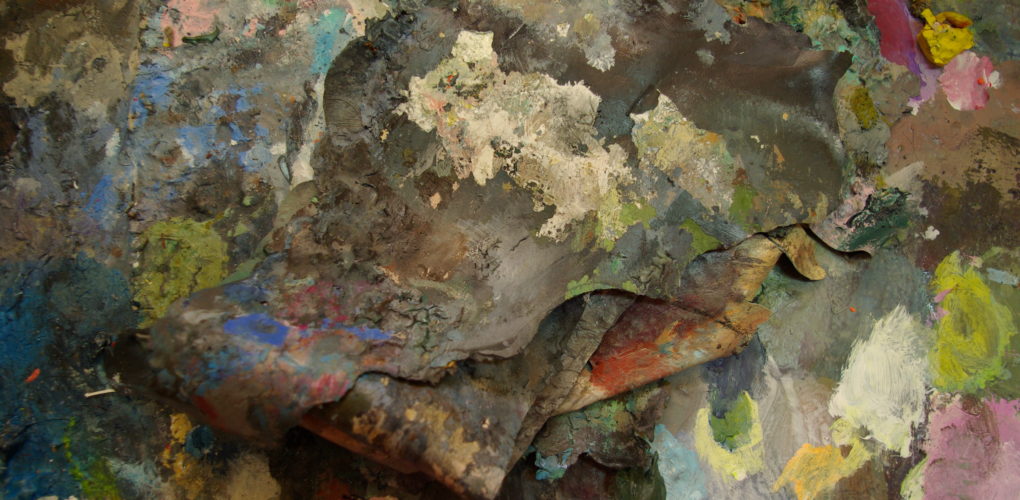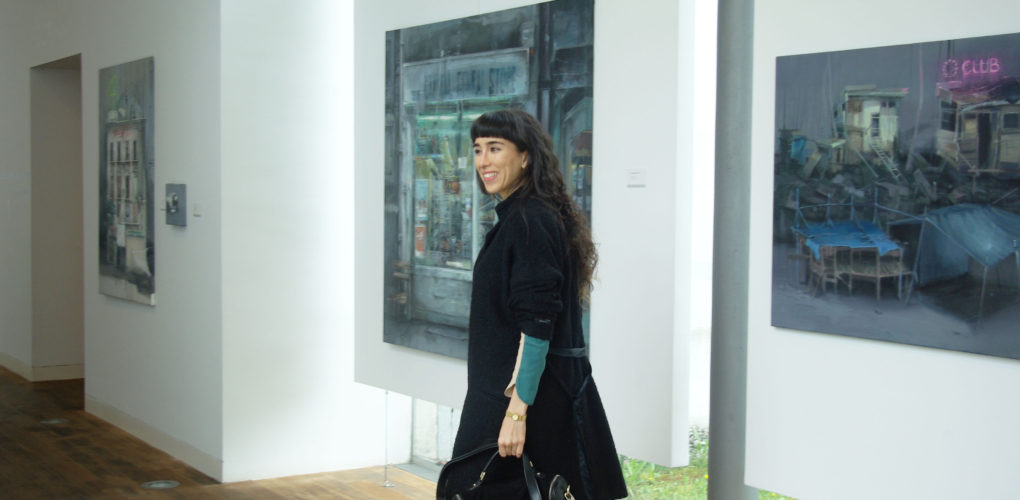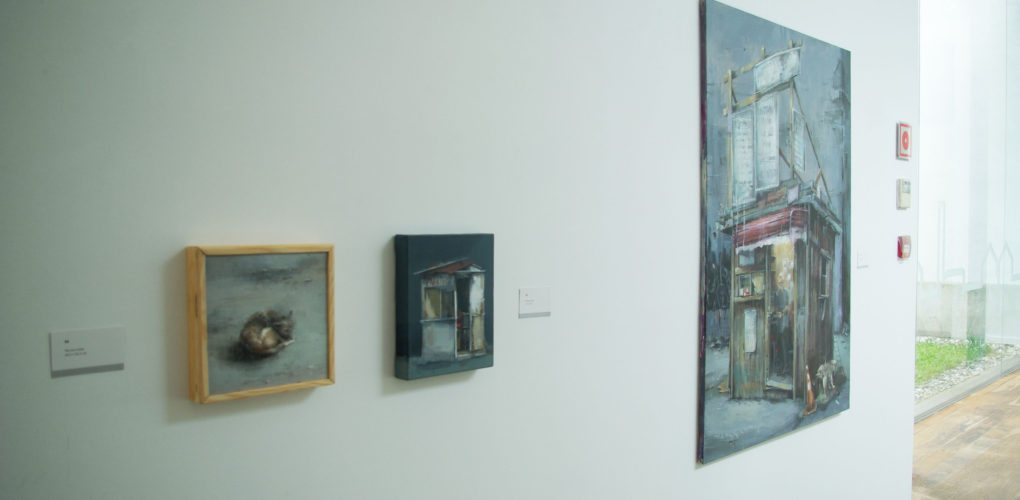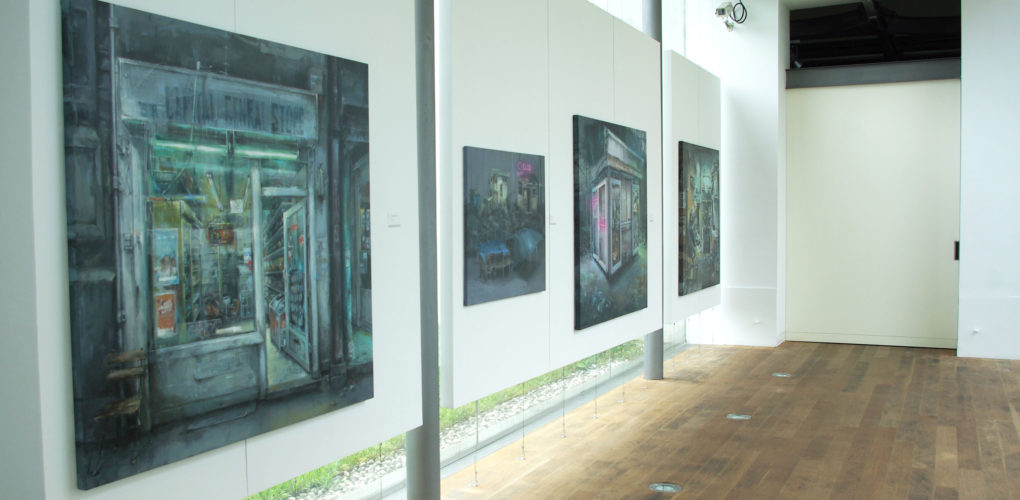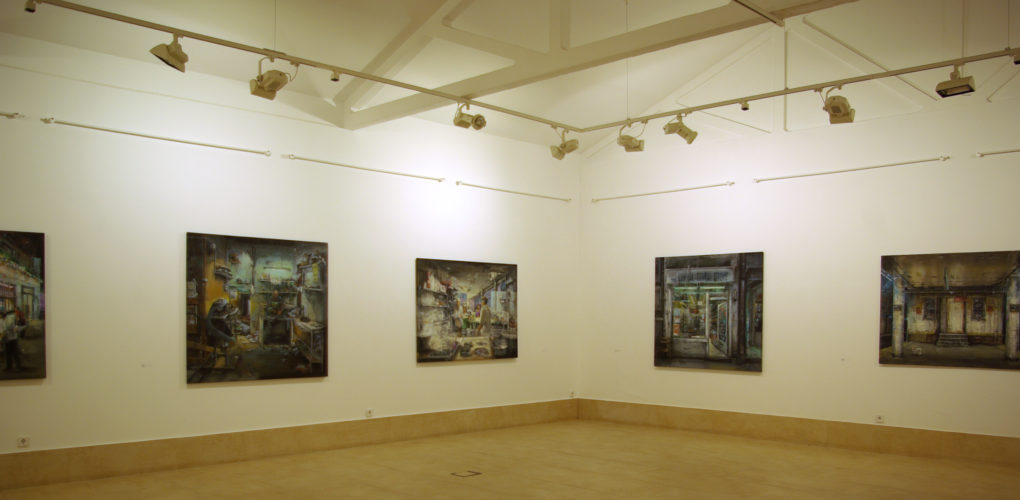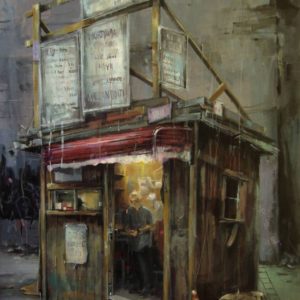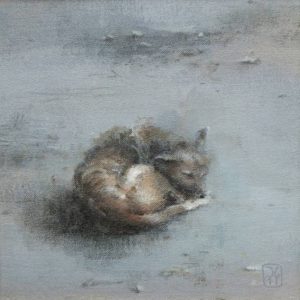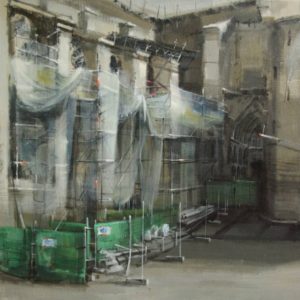One to Watch
 Leticia Gaspar’s paintings of the urban environment provoke a sense of isolation and abandonment
Leticia Gaspar’s paintings of the urban environment provoke a sense of isolation and abandonment
Spanish artist Leticia Gaspar is interested in the feelings her uncanny works provoke. Her paintings are explorations of the urban environment, laden with themes of isolation, abandonment, and reconstruction. She introduces foreign elements in her works, playing with light, composition, color, and her knowledge of other mediums (drawing and photography) to create depictions of ambiguous and often post-apocalyptic spaces.
Leticia is currently finishing a dissertation at the University of the Basque Country, where she also studied Fine Arts and received a Diploma of Advanced Studies in Painting. She has won numerous awards and grants for her works, including the XXIII Concurso Nacional de Pintura Ciudad de Medina de Pomar and second place for the X Premio Eduardo Ruiz-Golluri. She was named a finalist in the VII Premio Fundacio Barcelona Olimpica. Leticia has an extensive exhibition history in Spain, including solo shows at La Vidriera, Juan de Lizarazu Gallery, and the Eduardo Urculo Museum. This year, her works were featured at NordArt in Germany.
What are the major themes you pursue in your work?
I have a predilection for enigmatic places or scenes, I am not so concerned with the theme as I am about the feelings that it may provoke. I usually work with images that transmit isolation, abandonment, or reconstruction, sometimes even with a kind of post-apocalyptic imaginary.
I normally paint things that are related to the contemporary context. I draw inspiration from the places I visit or from the world around, like national or international news and political, social, or environmental events.
My relationship with painting has much to do with emotion; to paint something I need a motivation that originates from the object I want to represent. I focus mainly on projecting my interest in other disciplines such as drawing or photography. I am not concerned with copying the model, I interpret what I see and reinforce plastic values to achieve what I consider important, the ability to excite. My work explores contemporary urban environment, using a figuration that places special emphasis on the use of pictorial resources, light, composition and color. I’m currently thinking about a surprisement of space through the introduction of foreign elements, sometimes through words or phrases that replace modules or advertising posters, sometimes playing with strange or paradoxical elements. It is something subtle that requires a closer gaze and introduces a point of ambiguity – it makes you wonder whether it was there originally. These are words or things that perhaps are out of context generating uncertainty.
For me a painting is not a decorative object; this is not the aim of art. On the contrary, it is a reflection artefact, not something propagandistic or with a single meaning, but a way of stimulating thought and, of course, artistic sensibility.
What was the best advice given to you as an artist?
Some experienced painters advised me to paint what I really want to paint, without being influenced by external opinions or fashion trends. This advice is concerned with the necessity of working with freedom. I remember an interview with Jenny Saville. She said: “I have learned through Picasso that the really good art lies in the ability of not knowing how to do something. And the journey of trying to articulate something you don’t know how to do is where the art is.” I agree with this observation. For me painting is a way of experimentation. I am not looking for a good formula to reproduce, but a process of learning. If you don’t play with experimentation, you will never know what you can make. So I think that experimenting with painting without clinging to a successful formula is good advice for any painter.
Prefer to work with music or in silence?
It depends on my mood and the work I am doing. Sometimes music helps me paint with more enthusiasm and agility but other times I need silence to concentrate or reflect on something.
If you could only have one piece of art in your life, what would it be?
This is a very difficult question. On the one hand, it would be great to see lots of great paintings every day, but on the other, it would be a big responsibility. I would be afraid of taking care of the piece and also of moving it away from the public domain. Even so, my first choice might be a masterpiece like El Saturno by Goya or a painting by Velazquez. Thinking of contemporary painters, I would be more than happy if I could own a work by Michaël Borremans, Gerhard Richter, or Justin Mortimer.
Who are your favorite writers?
Over the past few years I have been focusing on my doctoral research so I have not read much fiction. I like readings where something can be learned. I read about subjects like art, especially painting, philosophy, sociology, feminism, history, and anthropology. I enjoy books with a critical point of view, lectures that encourage reflection and maybe the understanding of different disciplines. There are a lot of interesting authors, such as Celia Amorós, Carol Duncan and Lynda Nead within feminist studies; Umberto Eco, John Berger and Norman Bryson in art; Pierre Bourdieu in sociology and philosophers like Michel Foucault or Judith Butler.
